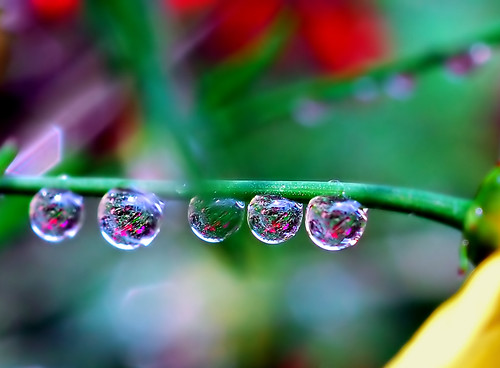   Â
  Â
TheGardenLady received this question from P. S:
A friend is watering roses (I’m sorry, but I don’t know the variety) several
times a week, for several hours at a time, with the hose on full blast, so that
a swamp forms around the rose bushes. The soil is heavy adobe clay, and we have been having mostly moderate summer weather, temperatures in the eighties. Is this watering necessary or even helpful for the roses? Please let me know if any further information is needed. Thanks for your help.
Most rose plants are demanding plants. Roses are high water use plants. They do like and need good watering but not too much water. Too much water can stress any plant. Keep roses too dry and they fail to thrive; if they are too wet they may succumb to root damage or disease. Keeping soils too wet will also deprive a plant’s roots of needed oxygen.
A plant’s root system needs moisture, nutrients, and air in order to carry out respiration. Oxygen is required for respiration. Without adequate air space in the soil, roots will soon deplete the soil of oxygen, carbon dioxide builds up, and this combination will slow down respiration. When respiration slows, other plant processes slow as well, including the plant’s ability to transport water. So wilting may occur. The well-meaning gardener may apply too much water thinking that the plant is parched when it really is overwatered.Â
One wants to avoid standing water around the base of the plants. When plants are under stress such as during flooding, they often release hormones that alter plant growth. One such hormone is ethylene. An over watered or flooded root system will trigger the plant to release ethylene that then causes the foliage to droop and eventually fall off if the stress is not removed. This drooping of foliage is called epinasty and sometimes looks like the plant is not getting enough water. Actually the culprit is too much water.
Roses like to have the soil slowly watered until the soil is soaked to a depth of 12 to 18 inches. Roses love well drained, fertile, loamy soil at least 2 feet deep, not heavy adobe clay. Loam is light and when squeezed the soil should crumble. The best soil drains freely. Soil should take 15 minutes to drain, longer than that and work should be done to improve the drainage. If it takes less than 15 minutes, one needs to add more organic matter to increase water retention. Usually this 15 minute test is done prior to planting the rose – when the hole was dug and was empty. Then it would have been easiest to amend the soil.
The problem of not having good drainage is especially severe in compacted soils where the natural air spaces present in the soil have collapsed. Heavy clay soils are particularly prone to compaction.
Once planted, keep roses mulched with 2-3 inches of an organic material. Mulch keeps the soil moist, helps reduce compaction thus improving drainage and continually adds nutrients to the soil. Roses don’t like their roots disturbed, so be very careful if you dig around the roots when adding the mulch. And the next time you see a wilting plant, check the soil to see if it is really dry before watering.
Roses are prone to diseases and damaging insects. Getting the foliage wet is not good for roses. Too much water splashing onto the foliage can spread diseases or encourage insects that harm the rose. One disease is called black spot. Black spot makes the rose leaves ugly. The leaves turn yellow with black spots. To prevent an insect called the rose sawfly, Arge ochropa, avoid excessive watering.
Â
The easiest way to get the moisture needed for the rose without soaking the foliage is to use soaker hoses or soil level and drip irrigation. After watering use a device for testing how much water is getting into the soil. A great site that discusses watering devices and how to test how deep the soil has been watered is this.Â
As I began the column, I reiterate and end by saying that roses are one of the more demanding plants to grow. TheGardenLady suggests that anyone who is serious about raising roses should join the American Rose Society where one can learn the best techniques for growing roses in your area. Â
